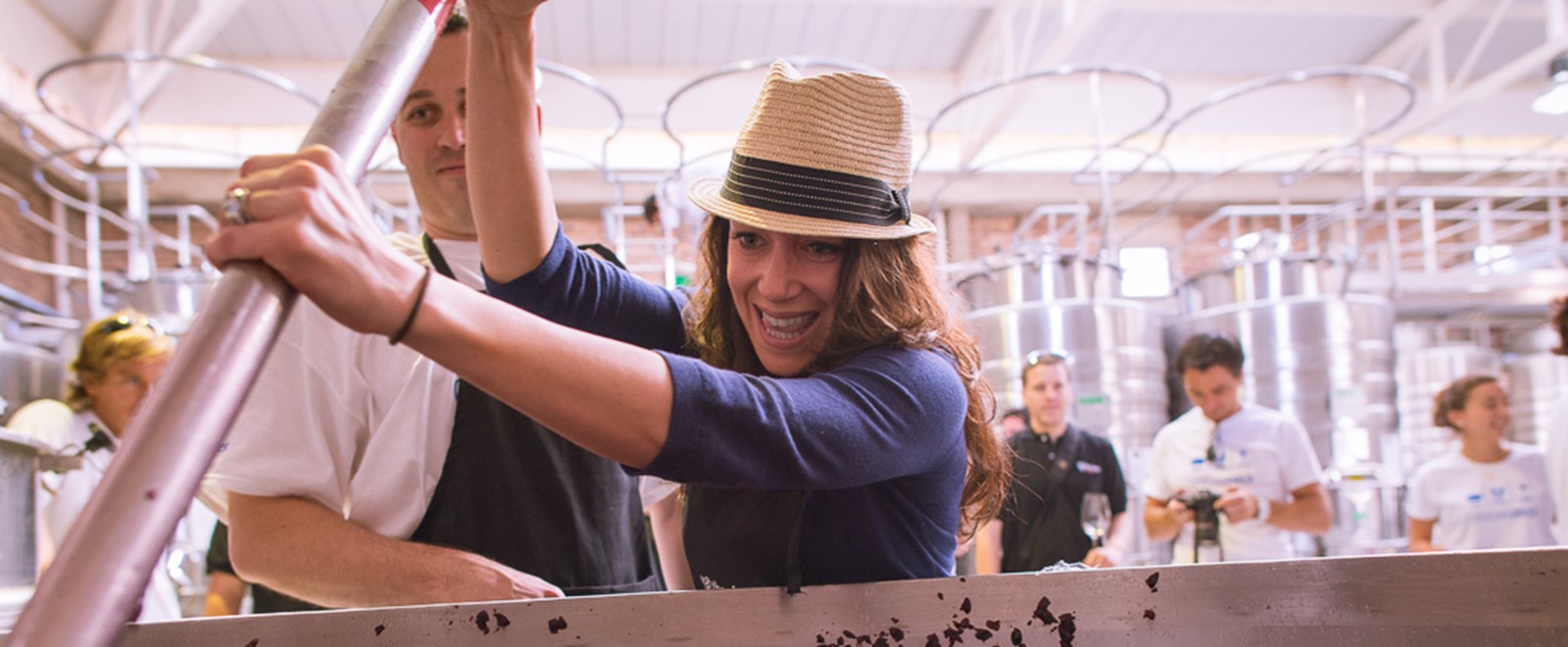
AND A DOLLAR BUYS A LOT Harvesting malbec grapes in the Mendoza region of Argentina.
By ERIC ASIMOV
CHEAPNESS has many manifestations. A perfect example is the 1950s monster movie cheapness that Frank Zappa once sang about, with creatures that looked like giant poodles and “visible nylon strings attached to the jaw of a giant spider.†I love that sort of “cheepnis,†as Zappa put it. Who doesn’t? The schlock and the camp were appealing precisely because they were an affront to pomposity and pretension
I have a different theory of cheapness as it applies to wine: Often in New World regions and increasingly in the Old World, a producer’s most expensive red wines are also the most done up — spiffed and polished and reeking of oaken vanilla and chocolate like too much makeup or hair pomade. Alternatively, the wines are made from grapes so overripe that the prevailing flavors are of baked fruit and jam. Either way, creating a flavor profile to fit a preconceived notion of an expensive wine diminishes any sense of place and individuality.
That’s why I’m often more interested in a producer’s less expensive wines. If you can dodge the minefields of oak substitutes and other winemaking tricks that are intended to imitate expensive wines — “true cheepnis,†in the monster movie sense — you just might find some wines in which you can taste simple essences rather than fancy mock-ups.
I love this kind of cheapness, too. It’s sincerity rather than camp, but it’s likewise an affront to pretension because you’re not playing the game. Let others spend the extra money; you get the more enjoyable wine.
That’s the theory, anyway. Obviously, not every producer is pretentious, nor is every expensive wine tricked up. But you’d be surprised how often it works out that way.
In an effort to examine one part of this equation, the wine panel recently tasted 25 bottles of malbec from Argentina that cost no more than $25 each. This is a particularly rich vein to mine, as Argentina’s currency is one of the few in the wine-producing world against which the dollar still retains good value. For the tasting, Florence Fabricant and I were joined by Laura Maniec, director of wine and spirits for B. R. Guest Restaurants; and Jean-Luc Le Dû, owner of Le Dû’s Wines in the West Village.
Malbec, as you’ve no doubt heard, is Argentina’s great success story. It came to Argentina in the 19th century from France, where nowadays it’s the leading grape in Cahors and a minor variety in Bordeaux and the Loire. But in Argentina it has found a home and become the country’s all-important signature wine, setting Argentina apart from other New World producers.
We were all pleased by the quality of the winemaking we found. Those we liked most showed balance, liveliness and structure and were characterized by attractive aromas and flavors of plum, flowers, dark fruit, mint and licorice. Few were exaggerated in terms of size or sweetness. Jean-Luc called them amicable and Florence modest.
On the down side was a certain amount of uniformity, although, paradoxically, Laura said, that is a significant source of its popularity in the restaurant trade.
“We sell so much malbec,†she said. “It plays the medium card — it’s middle of the road but not especially distinctive. Everybody likes it because it’s not displeasing.â€
If that’s damning with faint praise, so be it. But if you’re looking for a red wine that can play comfortably in a supporting role and that goes well with meats on the grill and with other summer cookout staples, many of these inexpensive malbecs would make fine choices. Four of our top five wines, in fact, were $12 or less, which, in a sense, demonstrated my cheapness theory in microcosm, as only six of the 25 wines in the tasting were in that price range. Of the 11 wines in the tasting that were $15 and under, five made the list, while the remaining five were from the 14 wines that were $16 to $25.
Our favorite wine, the 2004 Zagal from Hacienda del Plata, at $12 was also our best value, dense and fruity yet well balanced and structured, avoiding the too common pitfalls of sweetness and flabbiness. Hacienda del Plata is a fairly new winery, one we were unfamiliar with, but the rest of our top five comprised fairly well-known Argentine names. The 2005 Trapiche Broquel, also $12, offered winning aromas of violets, lavender, licorice and berries, while our No. 3 wine, the 2005 Ox Gran Reserva from Sur — just $10 — seemed, like many of these wines, to scream out for grilled beef.
See complete article here.
